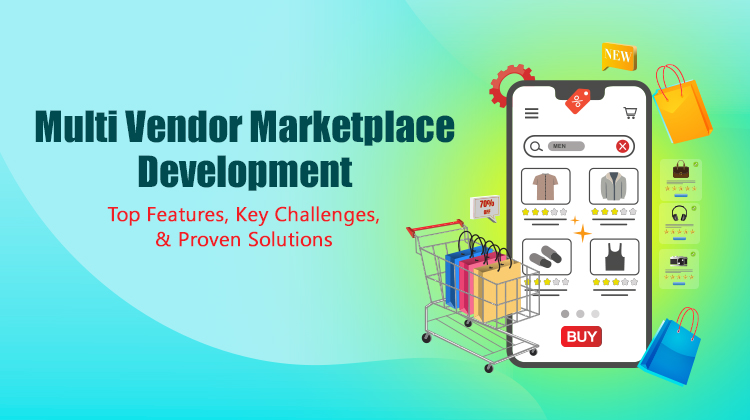
09 Jun, 2025
Online shopping has changed a lot in recent years. Customers now expect more options, better pricing, and quick deliveries—all in one place. This is where multi vendor marketplace development comes in.
A multi vendor marketplace allows many sellers to showcase and sell their products on a single platform. Platforms like Amazon, Flipkart, and Etsy have made this model extremely popular. But building your own marketplace is not just about copying big names. It involves careful planning, smart design, and reliable technology.
In this blog, you’ll discover the core features of a good multi vendor eCommerce platform, the challenges involved, and proven solutions to build and grow your own successful online marketplace.
Essential Features of a Multi Vendor Marketplace
Creating a powerful marketplace requires a strong foundation. Below are the most important features that every multi-vendor platform must have.
1. Easy Vendor Onboarding
Getting vendors to sign up should be fast and hassle-free. Your platform should allow vendors to register, upload documents, and start selling with minimal steps. A clear dashboard helps vendors manage their profile, products, and orders easily.
2. Vendor Dashboards with Analytics
Each seller should get their own dashboard. This should include tools to upload products, view sales performance, check inventory levels, and respond to customer messages. Real-time data and reports help vendors improve their performance.
3. Flexible Product Catalog System
A strong product catalog lets vendors add products under categories and use filters, tags, and descriptions. High-quality images and SEO-friendly product titles also improve visibility on search engines.
4. Customer Reviews and Ratings
Reviews build trust. Buyers should be able to leave ratings and feedback for both products and sellers. This helps new customers make informed decisions and encourages vendors to offer better service.
5. Smart Search and Filtering Options
Shoppers should be able to find what they need quickly. Features like advanced filters, keyword search, auto-suggestions, and personalized recommendations make browsing smoother and faster.
6. Secure Payments with Split System
Payment systems must be secure and flexible. The platform should automatically split payments between vendors and the admin. Gateways like Stripe, Razorpay, and PayPal are commonly used in such systems.
7. Order Management and Tracking
The platform should manage multi-seller orders smoothly. It must support order splitting, vendor-specific shipping, status updates, and tracking links for buyers. Vendors should get notified of every new order.
8. Mobile Optimization and App Support
Most buyers shop on mobile today. Your multi vendor eCommerce website should be fully responsive. Consider building mobile apps for Android and iOS to reach a wider audience.
Common Challenges in Multi Vendor Marketplace Development
Developing a marketplace isn’t as simple as launching a basic online store. You’ll face several challenges along the way.
1. Complex Platform Architecture
A multi-vendor marketplace handles many users at once—buyers, sellers, admins, and delivery partners. Balancing this load requires a solid backend and scalable infrastructure.
2. Vendor Management at Scale
Different vendors mean different business styles. Some may ship fast, others may delay. Some may list hundreds of products, others just ten. Standardizing quality and performance while allowing vendor flexibility is a big challenge.
3. Dispute Resolution and Refunds
Conflicts happen. Maybe a buyer didn’t receive the right item or a product was damaged. You’ll need a proper dispute management system that supports refunds, returns, and escalations.
4. SEO and Duplicate Content Issues
If many vendors sell similar products, you may face duplicate content issues. This can hurt your ranking on Google. Smart content structure, canonical tags, and product schema help improve SEO performance.
5. Data Security and Compliance
Handling customer data is a serious responsibility. Your platform must comply with laws like GDPR. Add SSL encryption, token-based login, and secure payment protocols to protect all user data.
Smart Solutions to Build a Successful Marketplace
Every challenge comes with a solution. Here’s how you can overcome the hurdles and build a reliable and scalable marketplace.
1. Use Modular Architecture
Instead of building everything as one block, break down your platform into smaller parts. This modular approach helps improve performance and allows future updates without crashing the entire system.
2. Choose Cloud Hosting
Platforms like AWS, Google Cloud, or Azure allow your marketplace to handle large traffic without breaking down. Cloud hosting also offers better security and data backup options.
3. Develop Vendor Guidelines and Policies
Create clear rules for vendors. Explain how listings should look, how fast items must be shipped, and how disputes are resolved. Set SLAs (Service Level Agreements) and ensure every vendor agrees to follow them.
4. Regular SEO Updates
Keep your SEO strategy updated. Add meta descriptions, use unique product content, and implement rich snippets. You can also run content audits to remove duplicate or outdated pages.
5. Partner with the Right Development Company
This is one of the most important steps. You need an experienced tech team that understands marketplace architecture, security, UI/UX, and ongoing maintenance.
Why Choose Idiosys Tech for Your Multi Vendor Marketplace Development
If you’re looking to build or scale your multi vendor eCommerce platform, you need expert support. Idiosys Tech is a top-rated eCommerce website development company in Kolkata that specializes in Multi Vendor Marketplace Development.
Here’s why we stand out:
• Custom development using the latest technologies
• Fully responsive design with SEO optimization
• Native app development for Android and iOS
• Experience with payment integration, order systems, and logistics
• Excellent post-launch support and maintenance
We understand the Indian market as well as global trends. Whether you're launching a niche marketplace or a large-scale platform, we offer the expertise you need.
Future Trends in Multi Vendor Marketplace Platforms
To stay ahead of the curve, watch out for these trends:
1. AI and Personalization
Artificial intelligence helps show the right products to the right users. Platforms are using machine learning to improve recommendations and boost sales.
2. Voice Search
Voice-enabled shopping is rising. Marketplaces are starting to add voice support to help users search products more easily.
3. Blockchain in eCommerce
Blockchain brings transparency to transactions and supply chains. It's becoming popular in high-value product marketplaces.
4. Headless Commerce
This approach lets you manage the backend separately from the front-end. It gives more control over design, personalization, and performance.
5. Green Logistics
More customers care about eco-friendly delivery and ethical sourcing. Marketplaces are adapting by using recyclable packaging and working with green logistics providers.
Conclusion: Launch and Scale with Confidence
Multi Vendor Marketplace Development is no longer optional—it’s the future of eCommerce. Businesses that embrace this model early stand to gain the most. But building a successful platform isn’t just about having the idea. You need the right features, the right team, and a solid strategy.
From onboarding vendors to managing orders, from SEO to secure payments—every piece must fit together smoothly. The good news? You don’t have to do it alone.
Idiosys Tech, a trusted eCommerce website design company in Kolkata, can guide you through the entire journey. Whether you're just starting or planning to scale, they offer the skills and support needed to make your marketplace thrive.
Ready to build your marketplace? Contact us today and start your journey toward eCommerce success.
--------------------------------------------------------------------------------------
What is the difference between a multi-vendor marketplace and a traditional eCommerce site?
A traditional eCommerce site sells products from a single seller or brand, while a multi-vendor marketplace allows multiple sellers to list and sell their products through a single platform.
Can I monetize a multi-vendor marketplace without selling products myself?
Yes. You can earn through commissions, listing fees, subscription plans for vendors, sponsored products, or ad placements—without managing inventory yourself.
Is it necessary to have a mobile app for my marketplace?
While not required at launch, having a mobile app boosts engagement, especially in mobile-first markets. Users prefer apps for convenience and speed.
Is it possible to run a local or hyperlocal multi-vendor platform?
Absolutely. Many startups launch city-based food, grocery, or service marketplaces. You can expand regionally or nationally once operations stabilize.
What is the role of a content management system (CMS) in a marketplace?
A CMS helps you manage blogs, banners, promotional pages, vendor guides, and static content without technical help—keeping your platform fresh and SEO-friendly.
Can AI and automation help in managing a marketplace?
Yes. AI can assist with product recommendations, fraud detection, customer service chatbots, and automated reporting—boosting efficiency and user satisfaction.
--------------------------------------------------------------------------------------
You May Also Read
Custom Quick Commerce Platform Development: Key Features, Challenges, and Proven Solutions
How to Develop a Custom E-Commerce Marketplace in 2024
The Voice Revolution: It's Time to Speak Up in E-commerce
Shopify vs. Custom Ecommerce: Deciding Your Digital Destiny in 2024

